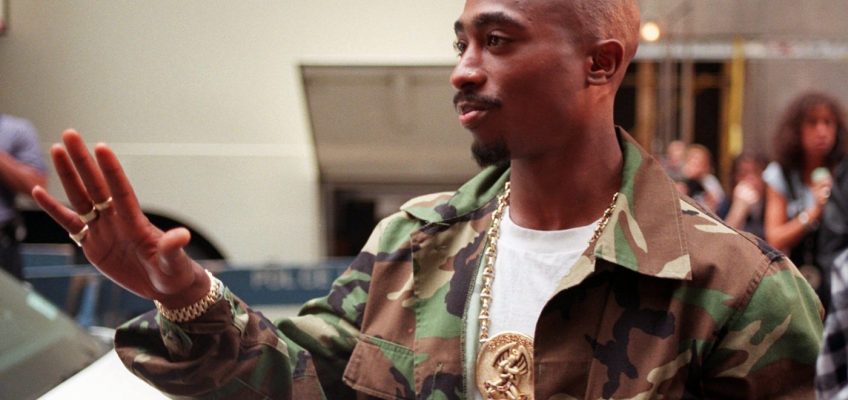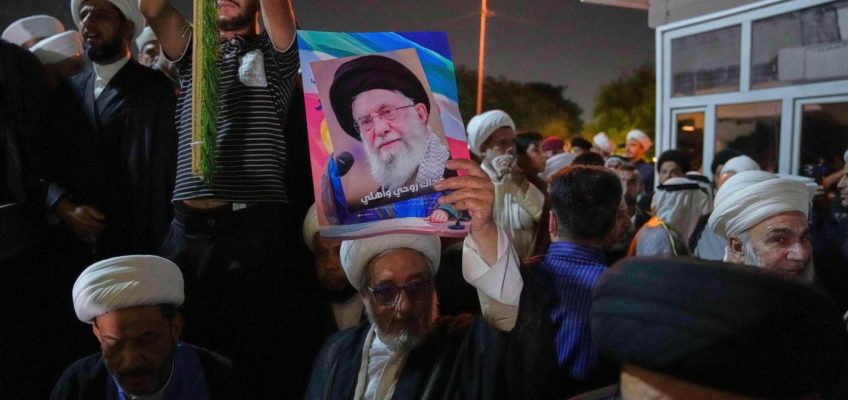Ever since his childhood, Dean Van Nguyen has felt a connection with Tupac Shakur.
The journalist and cultural critic first encountered the late rapper’s music as a student in an all-boys Catholic school in Ireland, and Shakur was a natural fit when Van Nguyen was deciding to write his second book, following his debut, “Iron Age: The Art of Ghostface Killah” in 2019. Van Nguyen knew he had a fresh angle on Shakur’s life and career.
“What made me really want to get into the book was the question of, ‘How does this happen?’” Van Nguyen says. “How does a guy who made music that you can play in the club become this figure on par with Che Guevara or a Bob Marley?”
Van Nguyen’s “Words for My Comrades: A Political History of Tupac Shakur,” out now from Doubleday, seeks to answer those questions. The book looks at Shakur through a political lens, examining his childhood spent around members of the Marxist–Leninist Black Panther Party — especially his influential mother, the late activist Afeni Shakur.
Van Nguyen talked about his book via Zoom from his home in Dublin, Ireland. This conversation has been condensed and edited for length and clarity.
Dean Van Nguyen is the author of “Words for My Comrades: A Political History of Tupac Shakur.” (Credit: Daragh Soden / Courtesy of Doubleday)
Q: How did you discover the music of Tupac Shakur?
It was back in school. When I was a kid, I had a bit more of a focused music taste than a lot of kids. A lot of the kids would just be into chart singles, but I quite liked R&B. I had young uncles and one young aunt, and they introduced me to a lot of stuff. It was the mid-’90s where the lines between R&B and hip-hop were starting to kind of blur and you were getting a lot of cross-genre collaborations. When I was a teenager, more in the late ‘90s, rap, gangsta rap was becoming quite popular in the schoolyard. This kind of music was a bit of an escape for us, especially because at that time, the videos were always really good and there always seemed to be stories around the music as well. Tupac was one of the artists that I grew up on, and I always maintained a fandom for him.
Q: What do you think made him so popular in Ireland?
He is the greatest icon the culture has ever produced. I think I’d say he’s probably one of the two most instantly recognizable artists alongside Eminem. But what I noticed, and one of the impulses behind this book, is that his icon is particularly strong in places of the world that have experienced colonial oppression or any sort of resistance, any sort of sense of rebellion or revolution. Ireland is in that vein; obviously, we were colonized by Great Britain for a long time.
There’s also something about Tupac as a symbol of resistance that is particularly interesting to Irish people. In the early 2000s, I went to a Nelly gig and a bunch of guys were waving a Tupac flag. And when the DJ who was warming up the crowd played “Ambitionz az a Ridah,” they all went nuts. I was quite young when he died. And dying young and dying violently sealed his reputation because that’s what happened to a lot of Irish heroes. They were killed young. That’s happened to a lot of revolutionaries around the world, and I think that strengthened his icon too. There’s just something in that that appeals to the Irish psyche, I suppose.
Q: You did a lot of interviews for this book.
Coming from a journalism background, the tenets of feature writing served me well. I like to talk to people, and for this, I was particularly keen to talk to people who may be voices in the Tupac story haven’t been heard quite as much. I wanted to chat with anyone who wanted to, but I found, for example, when you’re talking about a rap crew, sometimes it’s like the fourth or fifth most famous guy who’s actually got the most interesting things to say.
These guys aren’t recognized on the street, but they’re there observing history all the time. One of the real pleasures of doing the book was talking to the ex-Panthers and the other ‘60s and ‘70s activists who, at this stage of their life, are very eager to have their stories put down. Crucially, as well, they’ve gotten to a stage in their life where they’re no longer fearing any kind of government reprisal. They don’t think they’re going to get in trouble for speaking to me candidly.
Tupac Shakur, Snoop Doggy Dogg and Hammer (R-L) joined the activist group Brotherhood Crusade Aug. 15, 1996, in Los Angeles to kick off a campaign against the “three-strikes” law and to oppose the California Civil Rights Initiative, the anti-affirmative action measure. (AP Photo/Frank Wiese)
Q: When do you think that Tupac’s Panther background first became evident in his music, or was it always there?
It’s there from some of his earliest recordings. One of his early recordings that he made before he had a [record] deal was called “Panther Power,” and it was overtly about his background. This was always a part of his upbringing. But he was also raised in the backdrop of the revolution that never really came. The Panthers, by the mid- to late ‘70s and ‘80s, a lot of them were suffering from addiction, like Tupac’s own mother. A lot of them are still in prison on charges that were drummed up to stifle them. So I think he grew up in an environment where his elders are probably speaking a lot about regrets. I think he recognized that he needed to tailor his own worldview and his own message and his words to meet America. That was important in terms of his artistry, but certainly, I think that was always there in his music.
Toward the end of his career, his music became a little bit more macho and a little bit more violent. But then on the Makaveli album [“The Don Killuminati: The 7 Day Theory”], which was released after he died, you can see he’s coming back to his roots, and he namechecks a lot of the activists who would’ve been his mother’s contemporaries, who he would’ve known growing up. So yeah, it was always there. He just took on different forms and shaped it for his own. He saw Los Angeles in the 1990s, which had specific issues in terms of racism, police brutality and all that. He had that spirit in him, but the music was very tailored for his own age as well.



